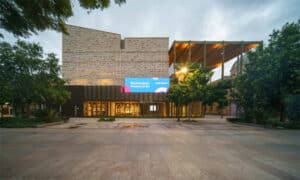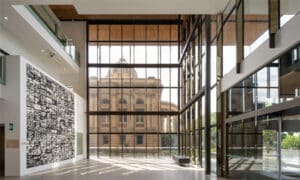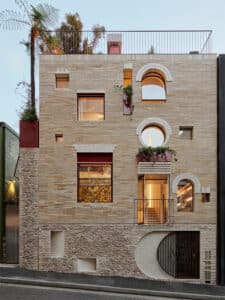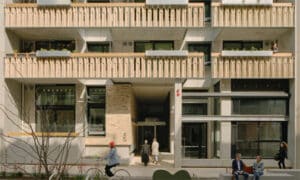Elias Visontay and AAP, Rockhampton museum and a small Sydney home among winners in Australia’s top architecture awards, The Guardian, 1 November 2023
The Australian Institute of Architects’ 2023 awards took a turn to sustainable designs that make the most of inner-city infrastructure and the environment.

Museums, concert halls, modern farmhouses and inner-city homes that maximise space are among Australia’s latest buildings to be recognised as architectural marvels.
The Australian Institute of Architects’ 2023 national awards highlight innovative, sustainable and infill developments that could help alleviate Australia’s housing crisis, according to its organisers. The awards also aim to draw attention to projects outside big cities. Almost a third of the winning projects are in regional Australia.
The judges travelled to every state and territory to visit 68 buildings over two weeks.
The new Rockhampton Museum of Art, a waterfront museum that opened in 2022, won the Sir Zelman Cowen Award, one of the top prizes.
“You feel like you can wander in there in your shorts and T-shirt,” said architect Lindsay Clare, who designed the building with wife and fellow architect Kerry Clare.

The building was not only designed to be welcoming, it also had to link the city to the river, host local shows and international exhibitions, and keep the city’s art collection safe from heat and humidity.
The three-year project, which cost about $34m, has exceeded expectations for visitor numbers.
The National Award for Public Architecture went to the Art Gallery of NSW’s Sydney Modern building designed by Japanese firm SANAA, and the yet-to-be opened Melbourne Holocaust Museum designed by Kerstin Thompson Architects.
Jury chair Shannon Battisson hopes the awards will provide inspiration for more buildings that engage with Australia’s climate, and with sustainability and culture.
In Sydney’s Surry Hills, a 69-square-metre home wedged between a modern mixed-use building and a factory on Waterloo Street, received the Robin Boyd award for residential architecture.
“The home shows how hard architecture can work, even on a small footprint,” judges said.

It was designed so that all elements of the home – entry, workspace, kitchen, living area, bedroom and rooftop garden – open off the central stairwell, allowing each space to be filled with natural light while expressing “character and charm”.
“From the moment it comes into view, the home announces itself as something different. Full of colour, the facade disguises the program within, allowing an element of privacy balanced by a sense of generosity to the public street,” the judges said.
Battisson said Australia was in the depths of a once-in-a-generation housing crisis, overlaid by a climate crisis.
“We are in dire need of new approaches to our built environment.”
The redeveloped concert hall at Sydney Opera House won two awards, for heritage, and for interior architecture.
“The combination of painstakingly re-crafted timbers and new fuchsia colouring, which nod to the original interiors designed by Peter Hall, is nothing short of awe-inspiring,” the judges said. “‘The House feels ready for its next 50 years.”
Merricks Farmhouse on Victoria’s Mornington Peninsula, designed by Michael Lumby with Nielsen Jenkins, won the National Award for Residential Architecture, alongside another Victorian project, Spring Creek Road farm house by architects Brew Koch.

Melbourne’s Nightingale Village apartment development in Brunswick won the multiple housing residential category, as well as the David Oppenheim award for sustainable architecture.
“The ‘triple-bottom-line’ multiple-housing typology, where the architect is also the developer, has been so successful in Melbourne that the waiting list for apartments in these developments remains in the hundreds,” the judges said.
Nightingale units are built with essential spaces and then residents share communal spaces such as rooftop gardens, with others living in the complex. The development, next to a train station on Brunswick’s bustling Sydney Road, has parking for bikes and shared cars only.

The Rockhampton Museum of Art was a special project, said Kerry and Lindsay Clare, who also designed Brisbane’s Gallery of Modern Art.
Its sandstone elements were dug from the same quarry as the nearby historic Customs House. In fact, the builders used scraps from the first dig more than a century ago.
The gallery can be closed off so people can use three storeys of the building for events, making it a multipurpose destination.
Unlike designing private houses, many people can experience public architecture, benefitting the whole community, said Kerry Clare.
“A public building is there, hopefully, for at least 50 years, so we find it quite gratifying to be involved in those sorts of projects,” she said.

